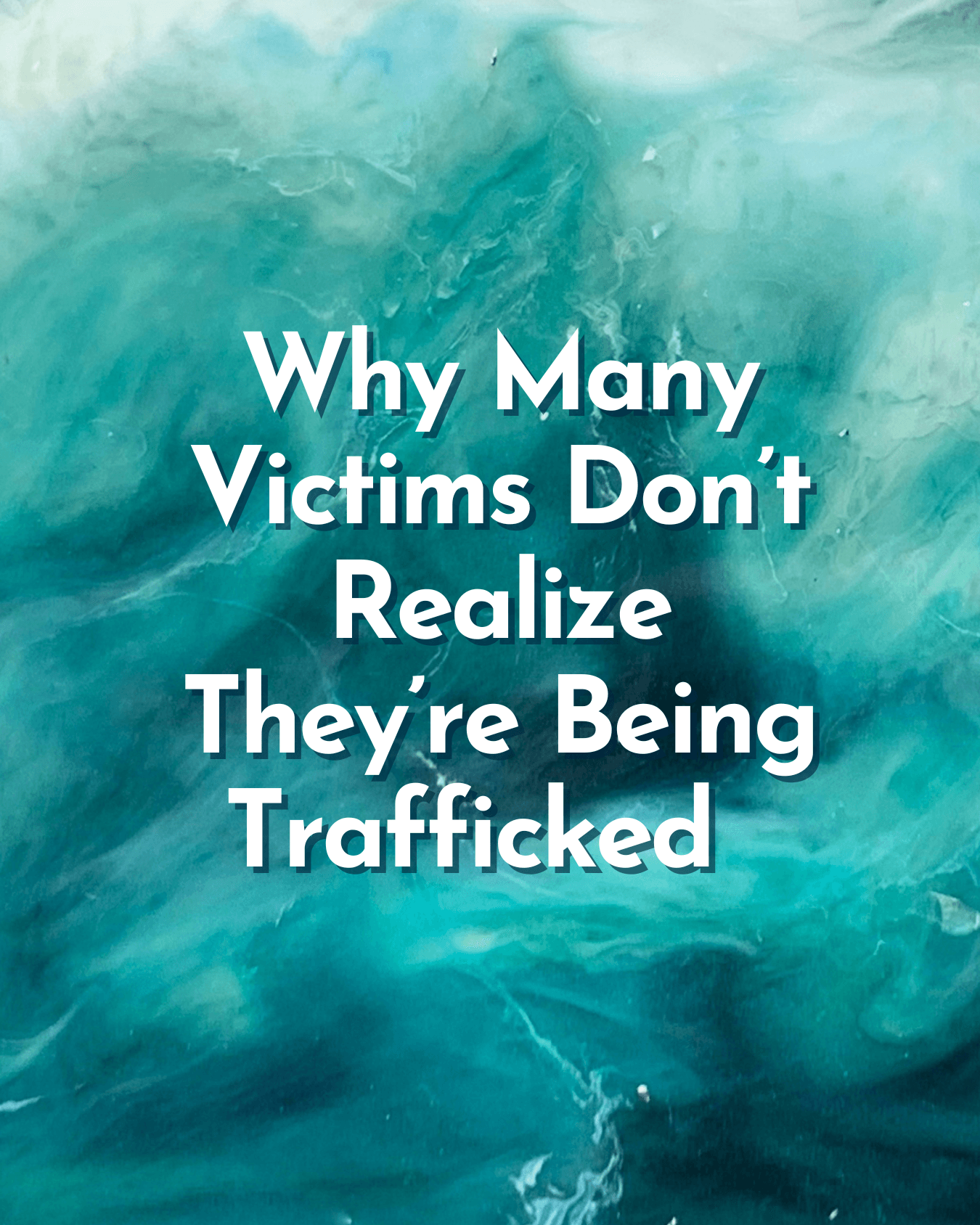
When people hear the words "human trafficking," they often picture abductions, handcuffs, and international crime rings. While those scenarios do occur, they represent only a small fraction of what trafficking really looks like and that misconception can be dangerous. The truth is, most trafficking doesn’t involve chains or strangers. It often looks heartbreakingly ordinary.
Just Like Everyday Life
Human trafficking is defined as the use of force, fraud, or coercion to obtain some type of labor or commercial sex act. It doesn’t require movement across borders, and it doesn’t always involve physical restraint. In fact, many victims continue to attend school, go to work, or live at home, all while being exploited.
A key reason many victims don’t realize they’re being trafficked is that the exploitation becomes normalized, especially when it begins at a young age or involves a trusted adult. Victims may believe they’re helping their family, working to survive, or even being loved.
In cases of sex trafficking, traffickers may pose as romantic partners or offer promises of a better life. In labor trafficking, victims may be trapped in domestic work, agriculture, restaurants, or factories under exploitative conditions that seem like the only option. The illusion of choice is one of trafficking’s most insidious elements.
Who Are the Traffickers?
Contrary to popular belief, traffickers are not always strangers in dark alleys or part of organized crime syndicates. In many cases, they are people the victim knows and trusts.
According to data from the U.S. National Human Trafficking Hotline, nearly 40% of trafficking cases involve a family member or caregiver as the trafficker. This is particularly true in familial trafficking, where parents, guardians, or other relatives exploit their children for money, drugs, or favors.
Familial trafficking is often underreported and misunderstood, largely because it hides in plain sight. Victims may not see themselves as trafficked because the abuse is happening within the family and the emotional bonds involved make it even harder to recognize or escape.
In other cases, traffickers can be intimate partners, employers, friends, or community members. The unifying factor is not how they look — it’s how they manipulate power and vulnerability.
Why Victims Often Don’t Know They’re Victims
Several factors contribute to victims not realizing they are being trafficked:
- Grooming and manipulation: Traffickers often build trust or dependence before the exploitation begins.
- Coercion over force: Emotional blackmail, threats, and gaslighting are often used instead of physical violence.
- Cultural or economic pressures: Victims may believe they’re fulfilling a duty or have no other viable options.
Shame and stigma: Feelings of guilt or fear of judgment can prevent self-recognition or disclosure.
Additionally, societal myths about what trafficking looks like, including the idea that victims must be locked away or physically restrained, create a false narrative that makes it harder for real victims to identify their experiences.
What We Can Do
Understanding the diverse and often hidden nature of trafficking is a crucial step toward ending it. We must expand public awareness beyond the stereotypes and make space for victims’ stories, especially those who don't fit the “movie version” of what trafficking looks like. More on the factors that make someone vulnerable and warning signs to know here.
If someone expresses discomfort about a relationship, work situation, or family dynamic that involves pressure, control, or exploitation, take them seriously. Trafficking often thrives in silence, and the first step toward stopping it is breaking that silence.
Further Reading and Resources:
Navigating the Unique Complexities in Familial Trafficking https://www.state.gov/navigating-the-unique-complexities-in-familial-trafficking/
National Human Trafficking Hotline – 1-888-373-7888 or text 233733 24/7
Local Trafficking Resources at Victim Centers:
Nampa Family Justice Center (Canyon County) - 208-475-5700; M-F 8-5
Faces of Hope (Ada County) - 208-986-4357; M-F 8-5


